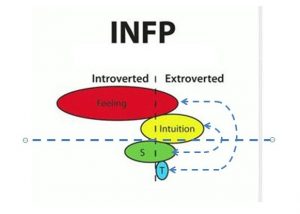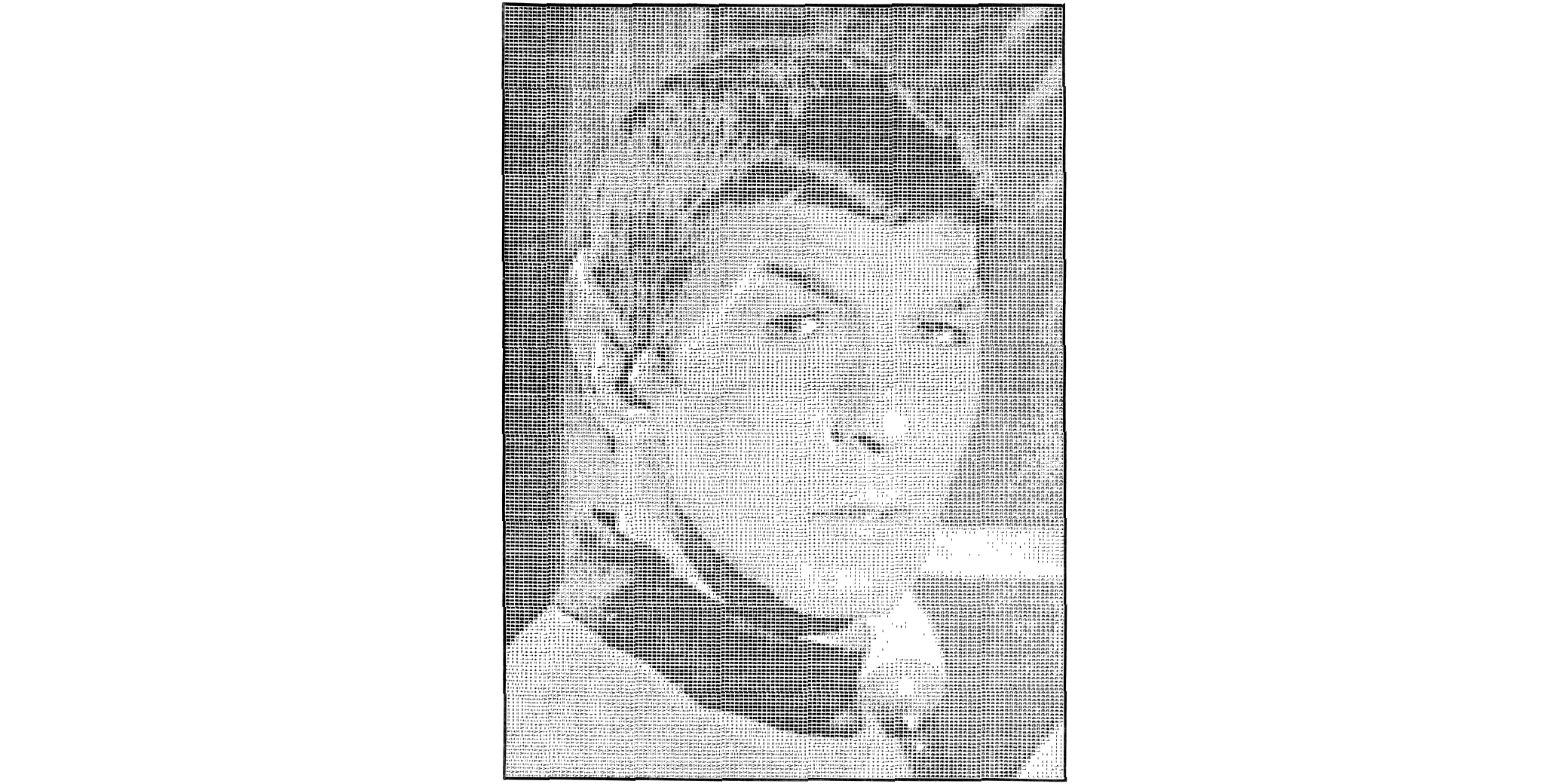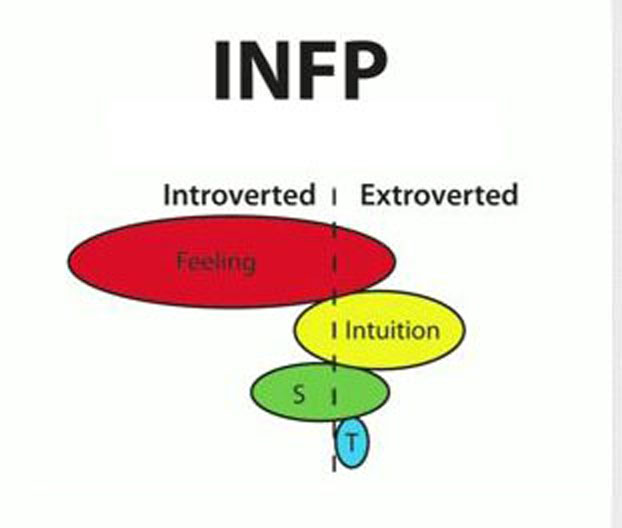I took the Myers-Briggs Type Indicator (MBTI) test years ago. It indicated that my personality type code was INTJ. I took the test again and got a different result, INTP. I read the portrait descriptions of both personality types (and other similar ones, ENTJ and ENTP). I was able to identify parts of myself in all four personality types, but none of them exactly fit me. Being human, it was very easy for me to read myself into each portrait, especially when they talked about the “positive” traits and behaviors. Frustrated, I decided that INTJ was good enough (I was a software engineer and that seemed to be the best match) and thought no more of it.
For several years, I thought I was an INTJ until I took a class about Tony Allessandra’s Personality Styles. At the end of the class, I was talking to the instructor and mentioned that I thought I was a Thinker. She replied that I was a Socializer (Feeling type). She said that she could easily tell from my face and body language what I was feeling. (I was always the joker in class.) That just blew me away; I thought I was a Thinker, but I’m actually a Feeler. With feedback from friends (very necessary to accurately determine your personality type), I finally identified myself as an INFP. Or at least, I’m more confident that I am an INFP than an INTJ; the portrait description for INFP seemed to match better.
I decided to revisit the MBTI and try to understand the theory so that I can understand myself better. Though I grew comfortable with what the MBTI type codes for N (Intuiting), S (Sensing), T (Thinking) and F (Feeling) meant, I could never quite “get” what I (Introverted), E (Extraverted), J (Judging), and P (Perceiving) meant. I always had vagueness in my understanding of what the meanings (in terms of behavior and traits) for these MBTI type codes were. There were certain parts of my personality which directly conflicted with some MBTI definitions for the type codes.
For example, I’m an INFP and I like to be on my own for periods of time, which explains why I am an “I” (Introvert). But sometimes, I want to be with people. When I’m out with my friends, I get energized from interacting with them. In fact, if you ask my friends, they will tell you that I’m an “E” (Extrovert) and the life of the party. Likewise, even though I’m a “P” (Perceiver) and like to have many open options, when I take on a task at home or work, I concentrate all my energy on completing the task, which is a very “J” (Judging) behavior. And, while I’m an emotional “F” (Feeling) at home, I am a coldly logical “T” (Thinking) at work. It seemed that I had a split personality.
Recently, I saw some videos about Carl Jung’s cognitive functions (thanks DaveSuperPowers!), which MBTI is based upon. When researching MBTI, I had seen mentions of the cognitive functions but had never explored them. Once I started looking into Carl Jung’s psychological types theory, I knew that I had to learn it. I could see that it was much more subtle than MBTI and suggested answers to the questions I had about my split personality.
The MBTI attempted to simplify Carl Jung’s psychological types theory. So there is a lot of overlap between the cognitive functions and MBTI in terms of definitions and type codes (which relate to function types N, S, T, J and each function’s I/E orientation). Unfortunately, the MBTI simplification only captured a part of Carl Jung’s theory and introduced standalone personality type codes I/E and J/P which can be misleading. I realized a deeper understanding of personality types can only be achieved by studying Carl Jung’s cognitive functions.
The Jungian cognitive functions consist of the N/S and T/F dichotomous (divided into two parts) functions, their strength of expression, and their I/E orientations (aka attitudes). N (Intuiting) and S (Sensing) are perceiving functions, used to collect data. T (Thinking) and F (Feeling) are judging functions, used to organize data and make decisions. The perceiving functions and judging functions are in dynamic balance, caused by different strengths of expression (Dominant, Auxiliary, Tertiary, and Inferior rankings) and orientation (Introverting or Extraverting) for each function. This dynamic balance provides a subtle, nuanced understanding of each personality type.
Note: While the Jungian cognitive functions N/S and T/F have direct matches with the MBTI type codes, there are no cognitive functions that match the J/P MBTI type codes. Similar, there are no cognitive functions that match the I/E MBTI type codes. In Carl Jung’s theory, the Introversion and Extraversion are orientation attributes applied to each cognitive function. The best correlation I can come up with is that the MBTI I/E and J/P type codes together can be used to determine the dominant and auxiliary functions (cognitive functions with the most powerful and second most powerful expressions in the personality) and their orientation.
To get a better understanding of the Jungian cognitive functions, let’s look at the four Jungian cognitive functions that match my INFP personality type:
My dominant (first) function is Introverted Feeling (Fi) meaning that my feelings are focused inward towards thoughts and ideas. I make decisions/judgments using an internal code of moral conduct, what feels right and avoids hurting others. Because I am focused inward, I am not emotionally expressive to people so they may think I’m reserved or a bit cold. A dominant Extroverted Feeling (Fe) type would be focused outward towards people and things, and would make decisions that preserve the social groups (family, community, etc) and cultural norms. A Fe type would be emotionally expressive, warm to people, and be more accepting of the general consensus. The above Fi and Fe types are descriptions of the extremes; we humans are on a gradient between the two and I am more towards the introverted feeling extreme.
My auxiliary (second) function is Extraverted Intuiting (Ne) meaning that my intuition is focused on getting subtle clues from my external world, with a focus on understanding people, patterns, relationships, and possibilities. An Introverted Intuiting (Ni) type would focus his intuition internally to build an abstract system of concepts and patterns. My Ne auxiliary function explains why when I’m with friends, I can be the life of the party; I’m expressing my auxiliary function more than my dominant. The Ne function helps me to get an idea of how people are feeling, and to match and improve their moods.
My tertiary (third) function is Introverted Sensing (Si) meaning that I perceive the present world in relation to my past experiences and reactions. I prefer to keep a concise internal view of the world and thus, I tend to be neat and a minimalist (I don’t care for owning things beyond the minimum). An Extraverted Sensing (Se) type would enjoy the physical world with all five senses. Se types love cool things and creature comforts. In extreme, a Se type could become a hoarder.
My inferior (fourth) function is Extraverted Thinking (Te) meaning that I prefer to think out loud. I can work on incomplete ideas by talking to someone (or by writing). An Introverted Thinking (Ti) type prefers to create an internal model where everything fits together perfectly. An extreme Ti type may ask you to pause talking while he internally processes an idea you have just introduced.
 If you look carefully at the four cognitive functions, you can see that the fourth and third functions mirror the first and second functions, in that order. The mirror involves a switch to the other dichotomous function (N to S and T to F, and vice versa) and a change in orientation (introverted to extraverted, and vice versa) from first to fourth and second to third. In addition, the first and second functions must have opposite orientations (which results in the second and third, and the third and fourth, having opposite orientations). This is a useful shortcut because if you know a person’s dominant and auxiliary types and the orientation of either, the third and fourth functions (and all remaining orientations) can be determined using the constraints above.
If you look carefully at the four cognitive functions, you can see that the fourth and third functions mirror the first and second functions, in that order. The mirror involves a switch to the other dichotomous function (N to S and T to F, and vice versa) and a change in orientation (introverted to extraverted, and vice versa) from first to fourth and second to third. In addition, the first and second functions must have opposite orientations (which results in the second and third, and the third and fourth, having opposite orientations). This is a useful shortcut because if you know a person’s dominant and auxiliary types and the orientation of either, the third and fourth functions (and all remaining orientations) can be determined using the constraints above.
Note: To map from MBTI personality type codes to Jungian cognitive functions, you can use the following rules: (a) the MBTI I/E indicates the orientation of the dominant cognitive function, (b) if MBTI “E” type, the J/P determines which is the dominant function, and (c) if MBTI “I” type, the J/P determines which is the auxiliary function. So for an ESTJ type, because it is an “E” type with “J”, the dominant function must be a judging function which is “T” and thus, the auxiliary is the remaining “S”. The resulting cognitive functions are Te, Si, Ne, Fi. And for an INFP type, because it is an “I” type with “P”, the auxiliary function must be a perceiving function which is “N” and thus, the dominant is the remaining “F”. So, the cognitive functions are Fi, Ne, Si, Te.
The inferior (fourth) function is special. Being the weakest, it is almost totally suppressed by the dominant. Most of the time, the dominant and auxiliary functions will be expressed (with the auxiliary playing a supporting role to the dominant), the tertiary function minimally expressed, and the inferior function barely expressed at all. Except, sometimes (usually under stress), the inferior becomes strong enough to suppressed the dominant function! When this happens, the mirror is flipped in that the inferior function becomes the dominant and the tertiary function becomes the auxiliary; the inferior and tertiary become expressed (with the tertiary playing a supporting role to the inferior) and the dominant and auxiliary almost totally suppressed. This is the sudden personality change! This explains why at work, my Extraverted Thinking (Te) function becomes dominant and I become an almost emotionless (suppressed Fi and Ne), talking egghead (expressed Te) who is a stickler for rules, processes, and details (expressed Si). I basically become the opposite of an INFP which is an ESTJ.
The order of the functions explained why I like to complete tasks as soon as I can. My dominant Fi is a judging function and creates the task by asking what should I do? Once I pick a task, my auxiliary Ne (with my tertiary Si), which is a perceiving function, explores options on how to best accomplish that task. My inferior function Te, which is a judging function, opposes the auxiliary Ne and tries to bring the task to closure/completion. Tasks are left incomplete if the Te is unable to bring the Ne to heel. Which is why when I start on a task, I try to complete it as fast as I can (without breaks), because the longer I let it go on, the more time is given to the Ne to become stronger than the Te.
According to the link above, the way an INFP approaches a task can be represented as a diamond with the dominant Fi at the top point, the auxiliary Ne representing the fat middle, and the inferior Te at the bottom point. In contrast, an INTJ’s approach would represent an hourglass with the dominant Ni at the top fat base (perceiving: what are all the possible things to do?), the auxiliary Te at the narrow middle (judging: pick something and do it), and the inferior Se at the bottom fat base (perceiving: Is the result good enough?). While the INFP may stop in the middle of a task without coming to completion, the INTJ may take forever to perfect the solution.
Besides MBTI, other researchers, like John Beebe and Linda Berens, have introduced four additional cognitive functions, called “shadow functions”, to Carl Jung’s original four cognitive functions. These shadow functions have the same order as the cognitive functions but with opposite orientations. For INFP (Fi, Ne, Si, Te), the shadow functions are Fe, Ni, Se, Ti (ENFJ). While the cognitive functions are expressed by preference, the shadow functions can become expressed when we are under stress. In some situations, we may purposefully try to express a shadow function and while doable, we will find that it is tiring (versus energizing when expressing a preferred cognitive function). This may explain why non-Fe and non-Ne types can get tired when dealing with people.
I feel that I am just digging at the first layer of Carl Jung’s psychological types theory. I expect to make more realizations, some of which might invalidate what I wrote above. So take everything with a large grain of salt.
Check out my followup post on this topic, MBTI: Not Misleading, Just Misunderstood.



Wow, I can’t believe this easy to understand explaination on the INFP cognitive funtions doesn’t have more comments! Beforehand, I used to look at the definitions in hope of deciding which ones fit me in order to understand myself better, yet the words just seemed to fly over my head (I’m only fourteen), but after reading your blog on the INFP cognitive funtions, which help determine things outside the INFP stereotype, being and INFP doesn’t sound so absurd to me.
Due to the misconceptions I constantly held on the behalf of extroversion and introversion, I often wonder how a sure-fire introvert like me could be precieved, and (this is a misconception) ‘act’ like and extrovert when interacting with friends. I’m considered social and this often put a damper on my spirits when I thought I’d finally settled on the E or I.
Thanks so much, I hope you have realized how much a difference you have made in my previous perception of myself. 😀
Hi, Thanks for the nice comment. I went through the confusion with introversion/extroversion myself so wrote it down to keep my understanding straight and to hopefully help others. I’m glad it was helpful. Cheers.
[…] […]
[…] […]
Well researched… I think your understanding would be amplified if you look at Dr Benziger’s work and her BTSA, because she takes the two central (NT/SF) components in true Jungian style but extracts information on type falsification… a major societal problem.
INTJ doesn’t have Si as one of their four dominant function, they only have Se. Please recheck your writing and make sure everything is correct ;).
Thanks, lovely_spark. Great catch on the typo. I made the correction.